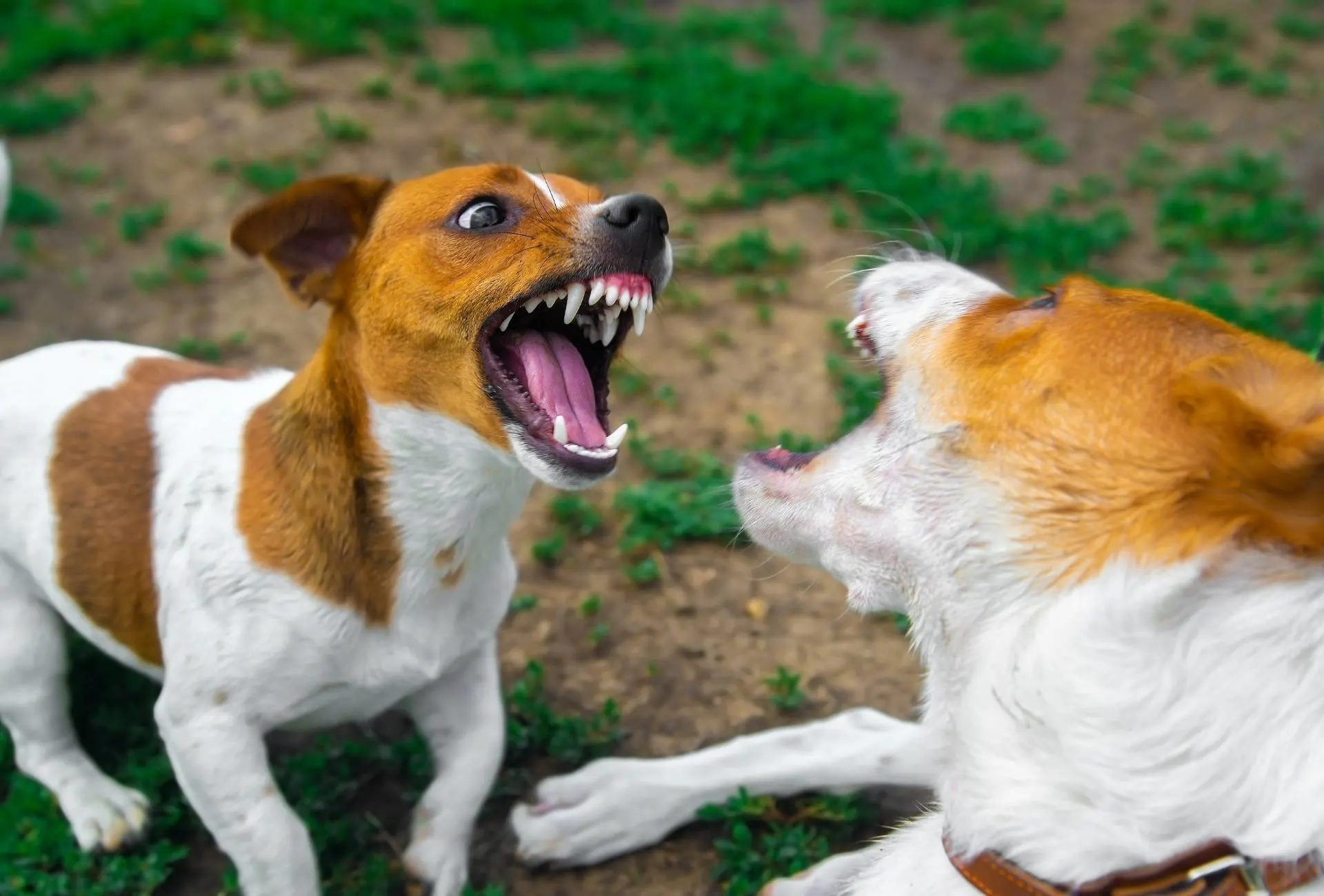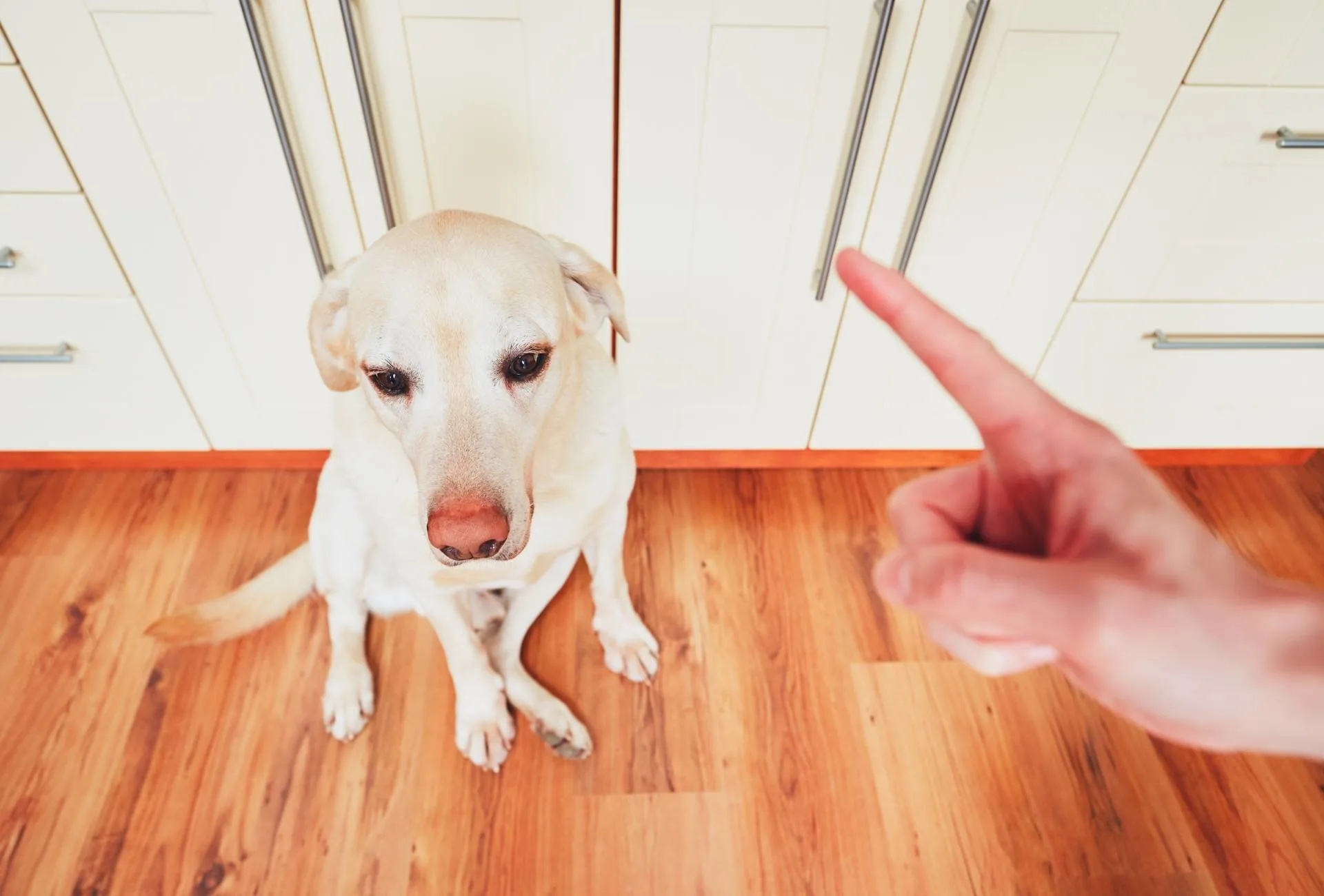Dogs need to be disciplined after fighting, right? Well, not exactly.
Owners whose dogs have instigated or joined a fight might feel like their dog needs a drill on the good ol’ doggy manners 101.
While it’s completely right to start training after a fight, it’s not as easy telling your dog what (not) to do right after it happened.
The first thing you need to do is stay calm and break the fight up. Not sure how to break up a dog fight?
Read this article and you’ll know exactly what to do next time.
Now the cause of the fighting and body language are crucial.
Make a mental note to form a training plan afterward.
Secondly, you can’t exactly discipline a dog right after fighting.
In fact, there are a couple of things you should never do right after an incident.
Big no-gos.

What you’re seeking is not a disciplinary method, but rather a training method.
There are a couple of reasons “discipline” doesn’t apply. Luckily, I have the solutions.
That’s the third point, we want to train our dogs to behave well long-term.
Prevention is always better than dealing with the aftermath. If a fight has occurred, take preventative measures from now on and investigate what caused the fighting.
But that may all sound pretty confusing right now, so let’s dive in.
How To Discipline Dogs After Fighting
You discipline dogs after fighting by exhibiting calm behavior when breaking the fight up and possibly using a verbal correction right after the fight. Start working on the root cause instead of punishing.

The most important thing when a dog fight happens is that you break it up quickly and calmly.
How you go about that depends on the situation, cause, and dogs involved.
If a strange dog is attacking yours, different measures might be called for than when your own two dogs fight over food or a toy.
Don’t use physical punishment or agitate the canines.
Just use as much force as you need to separate the dogs.
At this stage, you may use a verbal cue for correcting bad behavior if you have introduced one before.
However, that’s not always appropriate.
If the cause and duration of the fighting are unknown or you don’t know who instigated what, a correction is usually not effective.
But verbal corrections are the only way to discipline your dog right after fighting.
Why is that?
Your dog will not understand being disciplined as they don’t connect it to the underlying cause and instead may react with fear or confusion.
That’s where we get to the big no-gos.
Things not to do include physical punishments or useless aversive methods right after the fight.
It won’t do anything since it doesn’t address the underlying behavioral issue.
That’s the third point, long-term training instead of disciplining your dog after a fight.
Never physically discipline your dog after a fight, but rather evaluate what happened and why it happened and start training.
But what should you do instead?
Should I Punish My Dog After a Fight?
Never punish your dog after a fight. You may use a correction but never a punishment as the unforeseen consequences may include making the undesirable behavior worse.
Punishment is defined as “severe, rough, or disastrous treatment” and has no place in dog training.
If you can pin down what happened and feel confident that it is a training issue, correct your dog with a simple verbal cue.
The first element of a successful correction is timing.
Whatever stimuli you add (or subtract) must follow the undesirable behavior immediately.
So only use a quick correction if you catch your dog red-handed.
With a well-timed correction, you may be able to stop the fight, although chances are slim if the other dog is the aggressor.
If you see a behavior form, meaning that you know certain actions that will trigger undesirable behavior from your dog, you might even be able to stop it beforehand.
However, that won’t address the underlying issue.
Ask yourself if your dog was fighting over one of these things:
- Self-defense
- Attack due to stress or fear
- Play-fighting that escalated
- Resource guarding
- Food aggression
- Pain triggered by medical issues
The solutions and ways to discipline your dog heavily depend on what caused the fight.
Two dogs fighting in the same home is not as uncommon as you might think and if you’re unsure about the cause, consult a dog trainer.
If your older dog is attacking your puppy or if you brought home a rescue, read up about these specific issues.
What Should You Not Do After a Dog Fight?
After the fight has been broken up, you should never punish or scream at the dog and instead start training your dog to avoid another incident.
Consider professional help if you’re unsure about your dog’s behavior.
Disciplining your dog after the fight won’t work as the dog is usually unable to connect the dots and instead learns to fear their handler.
You shouldn’t let your guard down after a fight.
That means not letting your dog have access to other dogs around him and separating the two.
Some trainers recommend that you walk the dogs together after a fight and this can be appropriate under certain circumstances.
Is It Normal For Dogs To Fight Sometimes?
No, it’s not normal for dogs to fight, unless they’re play fighting or using measured corrections to communicate which is not considered serious fighting.
Play fighting is very common, especially among dogs familiar with each other and puppies.
You may choose to restrict play fighting with a focus on obedience training so you can interrupt your dogs whenever you see they’re getting too hyped up.
Among two healthy, properly socialized adult dogs, it’s normal to see corrections if one misbehaves.
If a correction is given and the other dog responds well, that’s not really a fight.
This can seem pretty serious to non-dog people, especially if really growly breeds are involved.
What are the signs that a fight is serious?
Hackles, snarling, tense or rigid body, whale eye, resources involved – all these can point toward a fight being serious.
If a wound was inflicted, consider professional help right away.
Avoid incidents in the future by taking appropriate measures (such as a muzzle, training, socialization, and professional help).
Disclaimer: This blog post does not substitute veterinary attention and does not intend to do so. I am not a veterinarian or pet nutritionist. If your dog shows any sign of illness, call your vet.